Pseudo-Western style architecture in Matsumoto (3)
I’ve been writing only about the buildings that no longer exist from the exhibition “Architecture in Matsumoto, 2021 : Pseudo-Western style architecture that adorned the city".
This is the third article.
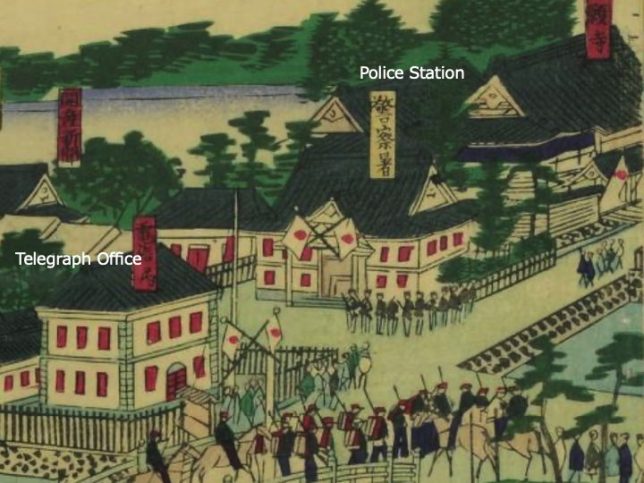
4) Matsumoto Police Station
Continuing from the previous article, I posted again a colored woodblock print by Hiroshige III. Last time, I described it as “the shape is not accurate, but the atmosphere comes out". But about this building, I think he drew this police station without seeing the actual one.
I didn’t know from the photo in the exhibition hall, but when I later saw a photo from another angle in a book, I realized that this building was not symmetrical. The building was like this.
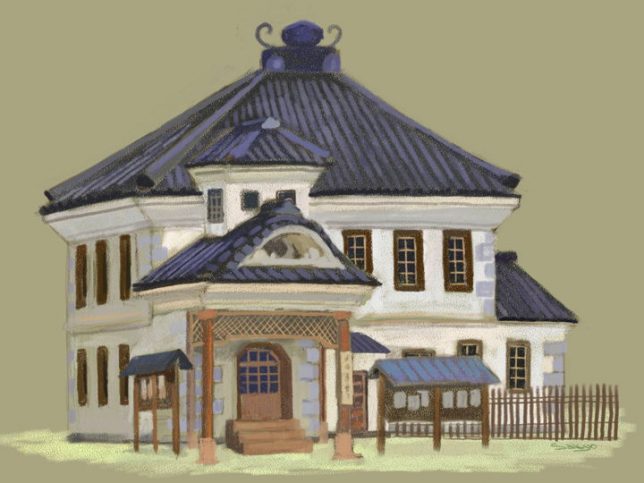
According to the display panel, it is a two-story wooden structure built in 1877, and it is estimated that Seiju Tateishi was involved in its design and construction.
(But I’ve seen other books that say the construction was completed in 1878.)
As I wrote in the previous article, the building burned down in the great fire of 1888, so this building existed only for about ten years.
(5) Matsumoto Branch School of Nagano Prefecture Normal School
Also built in 1877. It had been located on the east side of Matsumoto Castle, around the current Matsumoto branch of the Bank of Japan. It is thought to have been designed by Seiju Tateishi based on the Tokyo Courthouse (built in 1874), which he must have visited in Tokyo. There is an octagonal tower in front of the building, but it is not in the center of the building, but slightly off, just like the Kaichi School.
This building is depicted on the right side of “Prosperity at the Opening Ceremony of Matsumoto Middle School" (a set of three, 1885, by Shusetsu Yoshida).
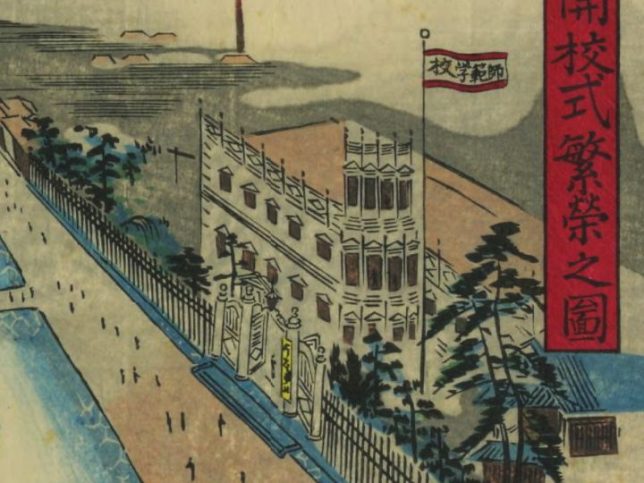
The Tokyo Courthouse was listed in “Meiji Taisho Architecture Photographs". It says the building was completed in 1874, but the name of the architect was not written. and the building was no longer existed at the time of publication (1936).
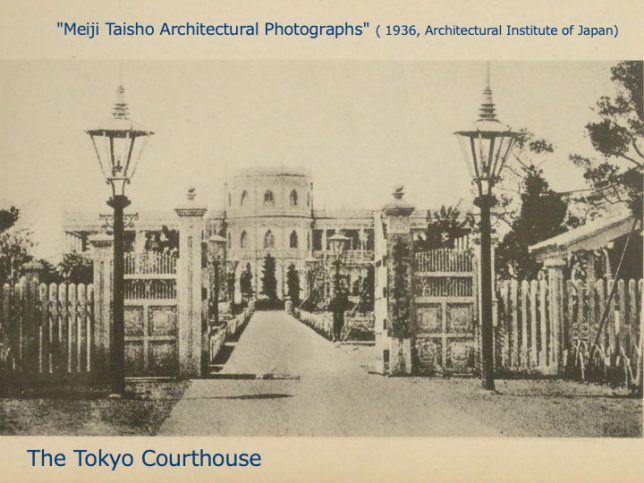
I found a colored woodblock print of the Tokyo Courthouse. The series was titled “Thirty-six Views of Tokyo" (drawn by Hiroshige III in 1874).
I don’t know if the building was actually this color, though.
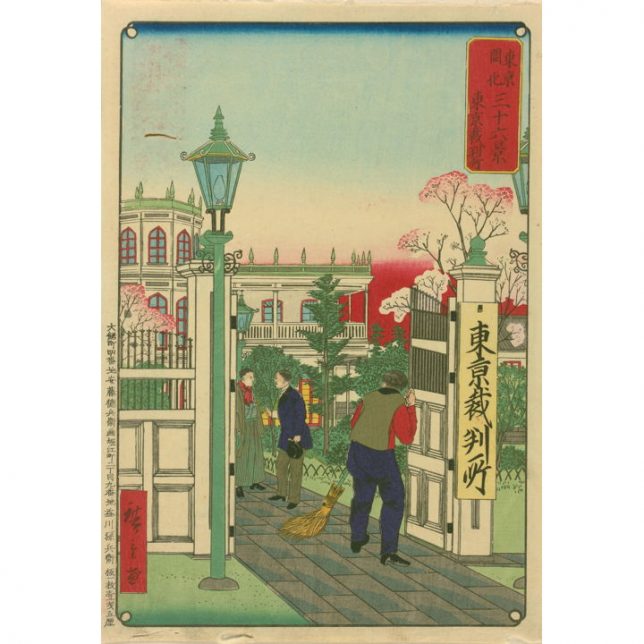
6) Nagano Middle School Matsumoto Branch School
The predecessor of the present Matsumoto Fukashi High School. It was built in 1885 on the site of Matsumoto Castle. This school building was also designed by Seiju Tateishi. The school was expanded and remodeled later, and was used until 1935 when the school was moved.
The picture is from “Prosperity at the Opening Ceremony of Matsumoto Middle School" as above. (Center of the set of three)
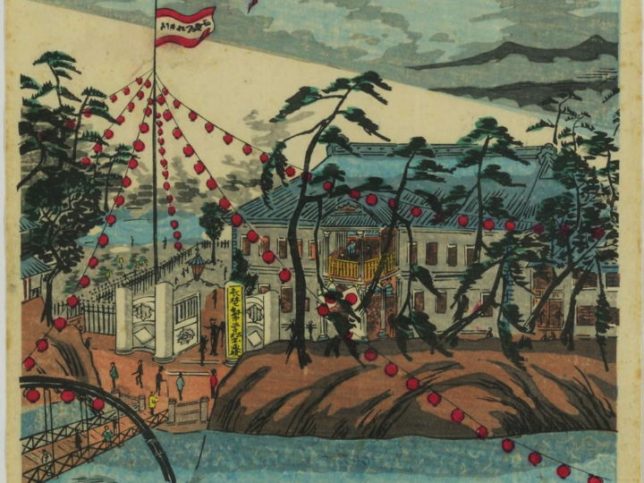
(7) Matsumoto Post and Telegraph Office
The year after the fire in 1888, the Matsumoto Post Office was moved to the same place where the telegraph office was located, and became the Matsumoto Post and Telegraph Office.
The building looked like this, but the color was decided by my imagination.
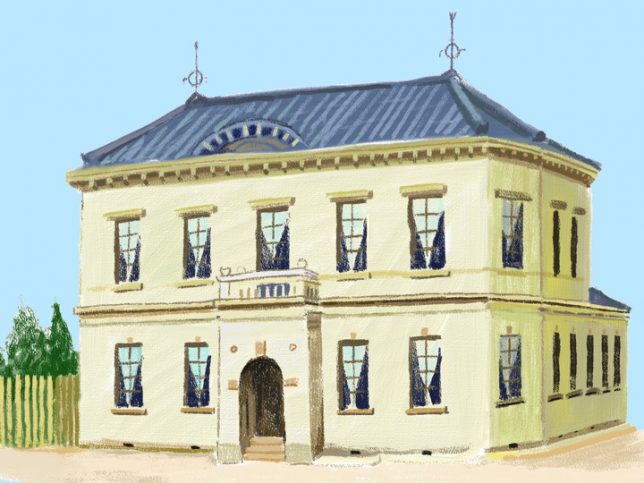
The next picture is from “Matsumoto Guide: with Japanese Alps and the Matsumoto Plain" (1921), and the building is larger than the picture above. Although the date is not clear, it had undergone a major expansion and renovation.
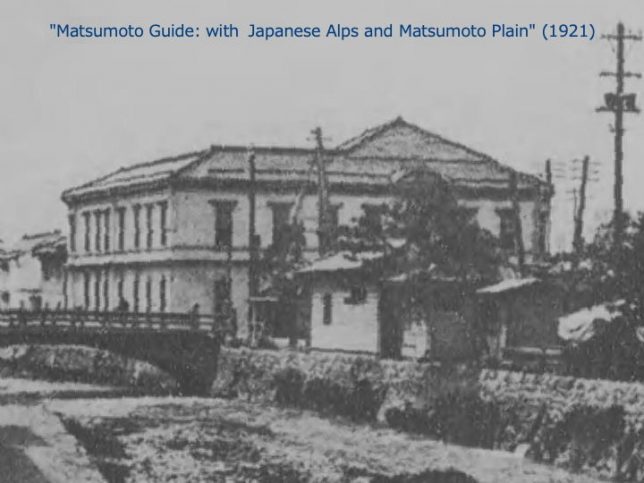
The Matsumoto Post and Telegraph Office became the Matsumoto Post Office again in 1903, and continued to operate here until 1961. (After that, it moved.)
***
Well, up to five of the seven buildings I mentioned this time were buildings in which Kiyoshige Tateishi was involved. His activities in Matsumoto were remarkable.
Tateishi was born in Matsumoto in 1826 as the second son of a carpenter’s master. He succeeded to his father and worked for the Matsumoto clan in the Edo period. In the Meiji era (from 1868), he received many jobs from Chikuma Prefecture. In addition to the buildings mentioned above, he was also commissioned to build the Higashi Chikuma Higher Elementary School, Chikuma Prefecutural Normal School, Matsumoto Court, Omachi District Court, Nagano Prefectural Assembly Building, and many others. (The Matsumoto courthouse is not the building that is preserved today, but the first courthouse that existed before it. It was a Japanese-style building, not a pseudo-Western one.)
Tateishi was 39 years old when the Meiji Restoration took place. He enjoyed western culture such as cameras and beef when he went to Tokyo to see western style architecture. He also had a keen interest in Western culture, as he used to scrap advertisement pictures from Western newspapers.
It can be said that the carpentry skills he had acquired since the Edo period, combined with his interest in the West, led to the creation of Matsumoto’s original pseudo-Western architecture.
***
The panel exhibision contains also existing architecture in Matsumoto.
On November 6, a tour of the buildings will be held in the center of Matsumoto City, guided by architects (limited to 15 people, registration required). For information on how to apply, please visit the historical museum of Matsumoto City website. (written in Japanese)
[reference] (All materials are written in Japanese)
* Panel exhibition “Architecture in Matsumoto, 2021 : Pseudo-Western style architecture that colored the city “, Matsumoto City Historical Museum held
* Matsumoto City Museum News “You and the Museum" No.206, published on September 1, 2016
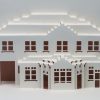
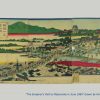
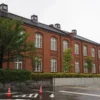
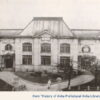
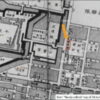
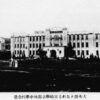
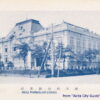
Recent Comments